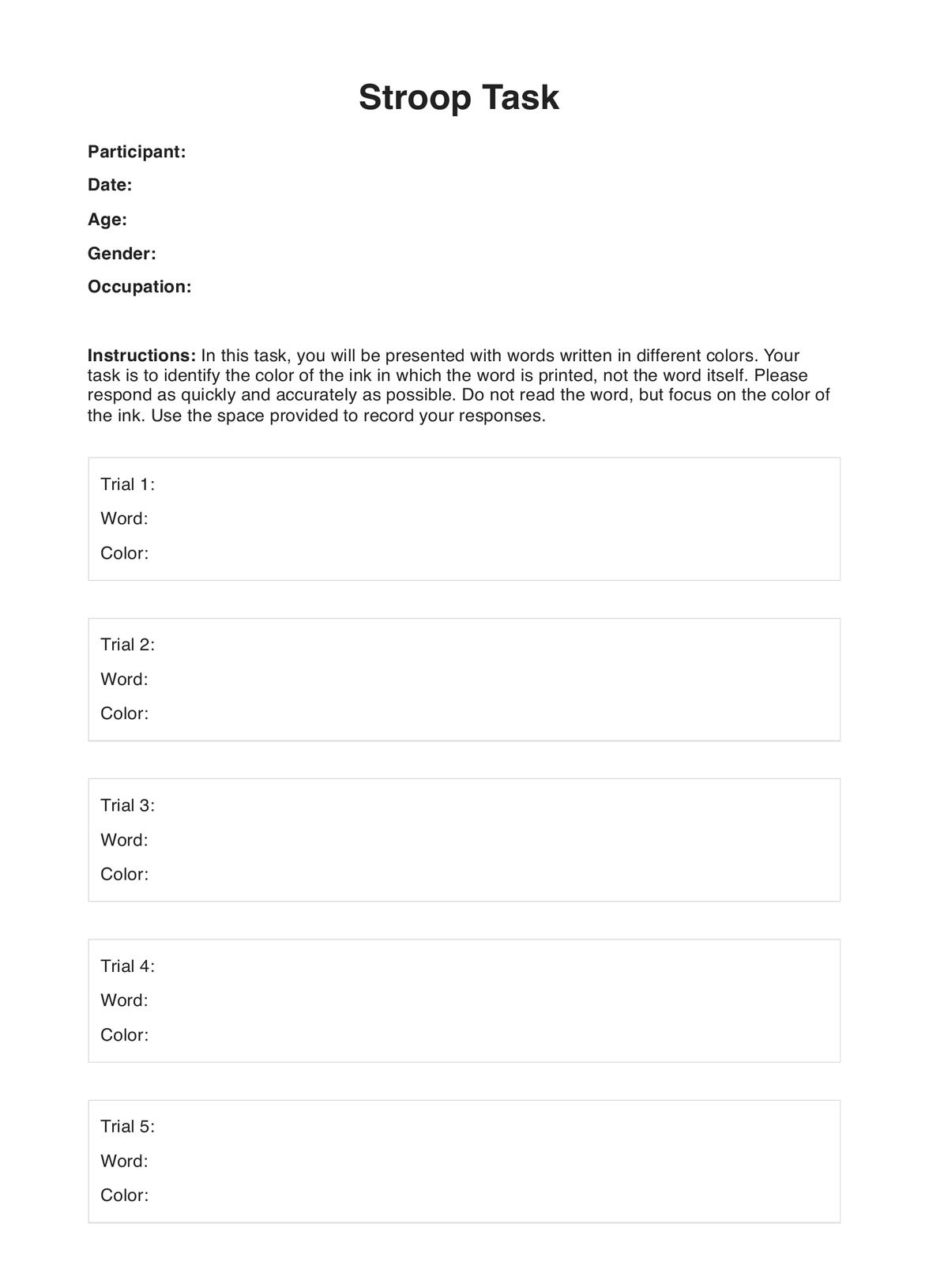The Stroop Tasks are designed to be versatile and can be administered to a wide range of individuals. This includes various demographic groups, such as children and adults, as well as distinct populations like clinical patients with mild cognitive impairment or frontal lobe lesions, individuals with neurological concerns, students in educational settings, and participants in neuropsychological research. It is essential that professionals conduct tasks like psychologists, neuroscientists, and educational experts who are equipped to interpret the results, which can involve assessing cognitive control, inhibitory control, and processing speed.

Stroop Tasks
Explore the Stroop Task: a tool to evaluate your cognitive skills in handling conflicting data. Download our comprehensive PDF for in-depth insights.
Stroop Tasks Template
Commonly asked questions
Stroop Tasks are employed in a multitude of contexts to measure selective attention, processing speed, and the ability to inhibit cognitive interference. They are particularly useful in neuropsychological assessment for detecting conditions that affect cognitive functions, in educational psychology to understand learning processes, and in clinical practice for monitoring treatment efficacy. Additionally, they serve as a tool in experimental psychology to investigate the underlying mechanisms of cognitive interference and parallel distributed processing.
To ensure that Stroop Tasks are accessible and effective for different populations, they may be customized by selecting suitable interference scores, adopting age-appropriate language, and adjusting the complexity of the stimuli.
EHR and practice management software
Get started for free
*No credit card required
Free
$0/usd
Unlimited clients
Telehealth
1GB of storage
Client portal text
Automated billing and online payments











